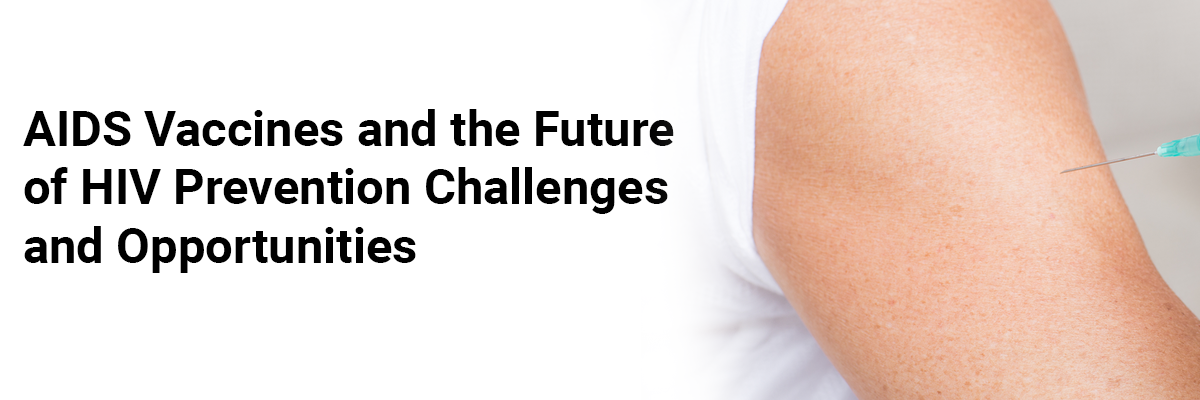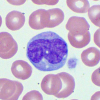
 IJCP Editorial Team
IJCP Editorial Team
AIDS Vaccines and the Future of HIV Prevention Challenges and Opportunities
AIDS (acquired immunodeficiency syndrome) continues to be a global health challenge, with millions of people affected by the Human Immunodeficiency Virus (HIV). Over the years, significant progress has been made in preventing and treating HIV/AIDS. Recent clinical statistics highlighted that in 2022, approximately 39.0 million individuals were living with HIV, marking a notable reduction in HIV-related deaths by 51% since 2010. However, despite this progress, 630,000 individuals globally succumbed to HIV-related causes last year, underscoring the ongoing urgency for action.
Regrettably, there is currently no cure for HIV, and once contracted, the virus remains for life. However, effective management strategies are available.
By adhering to their prescribed HIV medication and achieving an undetectable viral load, individuals with HIV can enjoy long and healthy lives while ensuring they do not transmit the virus to their HIV-negative partners during sexual activities. More people can now receive life-saving treatment through HIV medicines, also called antiretroviral therapy (ART). This development has had a positive impact on their overall health.
Additionally, HIV-negative individuals at risk of infection can choose to take pre-exposure prophylaxis (PrEP), which involves using HIV medicine as a preventive measure. According to the Centres for Disease Control and Prevention (CDC), research on the efficacy of PrEP has indicated that consistent use of PrEP decreases the risk of contracting HIV via intercourse by about 99% and from injectable drug use by at least 74%.
However, the development of an effective AIDS vaccine remains elusive, posing both challenges and opportunities in HIV prevention.
The Status of AIDS Vaccines
Currently, the achievable antibody (Ab) response to be elicited by an AIDS vaccine is focused on polyreactive natural antibodies (pnnAb). However, further research is required to control the subgroup, isotype, and magnitude of pnnAbs to enhance their effectiveness in stimulating protective innate responses.
Another obstacle encountered by pnnAb is the occurrence of prozone effects, wherein elevated levels of induced antibodies compete for binding, leading to reduced activation of protective innate responses.
Furthermore, researchers have identified various types of vaccines that have been tested in clinical trials, including recombinant protein vaccines, viral vector-based vaccines, DNA vaccines, and experimental approaches like broadly neutralizing antibodies (bNAbs) infusion.
While some of these approaches have shown promise in preclinical and early clinical trials, none have yet achieved the desired level of protection in large-scale efficacy trials. Therefore, despite extensive efforts, no licensed vaccine prevents HIV infection.
Challenges in AIDS Vaccine Development
Developing a vaccine for the human immunodeficiency virus (HIV) has numerous obstacles. One of the most significant obstacles is the life cycle of the virus, which promotes the establishment of persistent and difficult-to-clear chronic infections.
Other challenges faced in the development of the AIDS vaccine are:
1. Viral Complexity: HIV is a highly complex and diverse virus with multiple subtypes circulating globally. Developing a vaccine targeting all these subtypes and providing broad protection remains a significant challenge.
2. Immune Evasion: HIV has developed sophisticated mechanisms to evade the immune system, making it difficult to elicit a robust and durable immune response through vaccination. The virus mutates rapidly, evading immune surveillance and maintaining its presence in the body.
Other essential aspects associated with immune evasion are:
• HIV integrates and establishes latent infection within days or weeks; hence, the window of opportunity for the immune system to clear the initial infection is narrow.
• Conserved antibody sites on the outer envelope protein are "hidden" from immune detection.
3. Lack of Correlates of Protection: Unlike other successful vaccines, such as those for measles or polio, there are no known immune responses that correlate with protection against HIV infection. This makes it challenging to measure the efficacy of potential vaccines accurately.
4. Ethical Considerations: Conducting large-scale efficacy trials for AIDS vaccines presents ethical challenges. Researchers need to balance the potential benefits of a vaccine with the need to protect trial participants, especially in regions with a high prevalence of HIV.
Opportunities for Future HIV Prevention
1. Advancements in Vaccine Technology: Recent advancements in vaccine technology, such as novel delivery systems and immune-stimulating adjuvants, promise to enhance the immunogenicity of potential AIDS vaccines. New platforms, such as mRNA vaccines, offer exciting possibilities for developing innovative vaccine candidates.
2. Broadly Neutralising Antibodies (bNAbs): bNAbs are naturally occurring antibodies that neutralize a wide range of HIV strains. The areas of research for the Ab component of the bNAbs-HIV vaccine include
• Identification and initiation of responses from unmutated common ancestors.
• Broadening of initiated responses by directed-lineage immunizations.
While bNAbs alone may not be a practical approach for large-scale prevention, they can serve as a valuable tool for informing vaccine design. However, Combining bNAbs with other vaccine strategies may lead to enhanced protective responses.
3. Targeted Approaches: Tailoring vaccines to specific populations or risk groups could increase effectiveness. Developing vaccines that focus on the most prevalent HIV subtypes in a given region or target specific high-risk behaviors may yield better outcomes.
For instance, areas of research for the T cell component and Ab component of an HIV vaccine include
• CD4+ helper T cells
• CD8+ cytolytic T cells
• Combination of pnnAb and bnAb
4. Combination Prevention Strategies: Vaccines should be viewed as one component of a comprehensive HIV prevention strategy. Combining vaccines with other preventive measures such as pre-exposure prophylaxis (PrEP), treatment as prevention (TasP), and behavioral interventions can synergistically reduce new HIV infections.
Conclusion
The development of an effective AIDS vaccine remains a formidable challenge due to the complexity of the virus and the lack of established correlates of protection. However, the ongoing research and advancements in vaccine technology provide reasons for optimism.
Despite the challenges, the potential of an AIDS vaccine to transform the future of HIV prevention cannot be understated. Collaborative efforts between scientists, governments, and communities are crucial to advancing AIDS vaccine research, ultimately leading to the development of an effective vaccine to help end the HIV/AIDS pandemic. Until then, a combination of prevention strategies and continued investment in research remains vital in the fight against the AIDS vaccine.

IJCP Editorial Team
Comprising seasoned professionals and experts from the medical field, the IJCP editorial team is dedicated to delivering timely and accurate content and thriving to provide attention-grabbing information for the readers. What sets them apart are their diverse expertise, spanning academia, research, and clinical practice, and their dedication to upholding the highest standards of quality and integrity. With a wealth of experience and a commitment to excellence, the IJCP editorial team strives to provide valuable perspectives, the latest trends, and in-depth analyses across various medical domains, all in a way that keeps you interested and engaged.









.jpg)










Please login to comment on this article